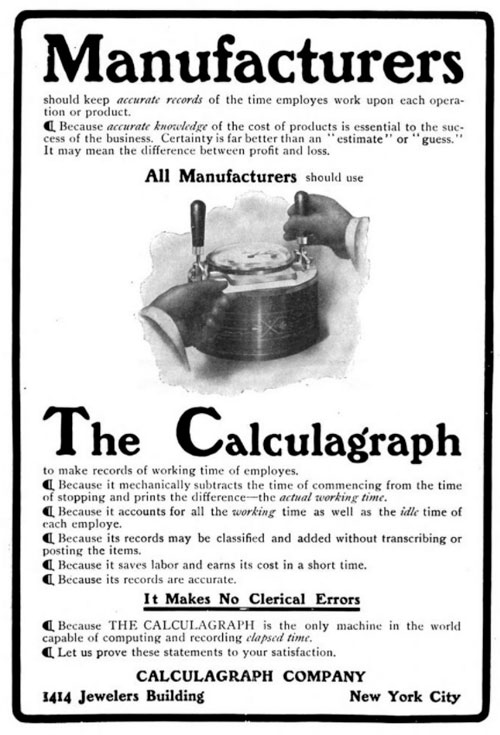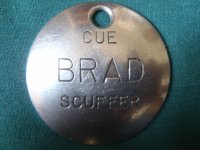You can remember a time when people actually made money playing.
You are using an out of date browser. It may not display this or other websites correctly.
You should upgrade or use an alternative browser.
You should upgrade or use an alternative browser.
"You Know You've Been Playing Pool For A Really Long Time When..."
- Thread starter DJSTEVEZ
- Start date
You Know You've Been Playing Pool For A Really Long Time When..
You recognize what this is, have seen one in your local pool hall and can tell me what it was used for
btw, I understand ones in pristine condition will fetch a small king's randsome from collectors.

OK, this is pretty interesting...call me a geek.

You recognize what this is, have seen one in your local pool hall and can tell me what it was used for
btw, I understand ones in pristine condition will fetch a small king's randsome from collectors.

OK, this is pretty interesting...call me a geek.

Last edited:
Pool table corners were ashtrays.
I am a youngin' by most of your standards, but I played in a hall that had these tables and it still amazes me that Brunswick thought this was a great idea.
You might be less amazed if you had payed $1600 to get new carpeting in your room,
and the FIRST day some dickweed had let his cigarette roll off those stupid slanting
rails and burn a hole in the carpet.
Dale
There is one of these (or something very similar to it) on the counter of the room where I play. Unfortunately it's not in good shape and has not been in many many years I woukd guess.You Know You've Been Playing Pool For A Really Long Time When..
You recognize what this is, have seen one in your local pool hall and can tell me what it was used for
btw, I understand ones in pristine condition will fetch a small king's randsome from collectors.

OK, this is pretty interesting...call me a geek.

Sent from my SM-N920V using Tapatalk
How can you "re-felt" a table if it isn't called felt?
Wouldn't it be called "re-clothing" a table?
***Actually the material is called baize.***
https://en.m.wikipedia.org/wiki/Baize
So....Re-baize a table?
Doesn't sound right.
Re-cloth it is then.
"Recovering" the table is the proper term for putting new cloth on the table.
There is one of these (or something very similar to it) on the counter of the room where I play. Unfortunately it's not in good shape and has not been in many many years I woukd guess.
Sent from my SM-N920V using Tapatalk
I used one of these in my first poolroom in Bakersfield in the 1970's. Worked flawlessly!
When I had to sneak into the pool hall because I was under 18 in Dayton, Ohio. Every real poolroom had at least one snooker table (10' American model) and one Three Cushion table. Most places charged sixty cents per hour per player. Ninety cents was considered expensive. Some places still charged by the game, usually a dime and the loser had to pay. You had to wait for the rack man to rack the balls for the next game.
In most poolrooms no deposit was necessary to play. They just handed you the balls and sent you to a table. You paid when you finished, it was all on the honor system. Every poolroom had a large assortment of house cues in varying weights from 15 ounces to 21. If you found a good house cue to your liking you put an identifying mark on it or even hid it somewhere when you finished playing.
You could buy a new Balabushka for $200! (I owned two and sold both when I went broke). There were poolrooms everywhere in the early 60's! Most were the new "family" style rooms with deco furniture and bright lighting. They were big places with sixteen or more tables and moms could feel comfortable leaving their kids there (if they didn't serve alcohol).
If you drove to the next town over, you were "on the road." Every poolroom had a "steer" man who would help you find games for a small cut of your winnings (usually 10%). As soon as you beat someone who could play you would be subject to local "knockers" trying to kill your action. It was time to move on. If you went broke, you slept in your car and sometimes you had to play "on ass" (with no money in your pocket) to get pumped up again. If you lost in that spot you had to give up your cue and maybe your watch (I never did, lol).
Winning $50 was a nice "score." If you had $400 in your pocket you felt like a rich man. You had no bank account, only the money in your pocket or in the glove compartment of your car. A really good hustler owned a Cadillac. There were at least a few hundred hustlers working the U.S. poolrooms and you would see the same faces all over the country. No one had a break cue and only one shaft to play with. If your tip got bad you had to change it yourself using a good knife, sandpaper, some glue and a large rubber band.
Everyone played 9-Ball and only the good players played One Pocket. In the Northeast they still played Straight Pool and in Kentucky, Tennessee, Southern Ohio and around Chicago, Bank Pool was popular. The old time players could play snooker and billiards as well and all of them said Greenleaf was the greatest player, not Mosconi. Lassiter was the King in the 60's and Ed Kelly was the rising star. Ronnie Allen ruled the One Pocket scene. Bar table pool was considered stealing by the real pool players, but that's where they went to make money. There were more suckers in the bars then the poolrooms and anyone could challenge the table by putting a quarter on the rail. A dollar a game (or a drink) was normal in most bars and a good player good make $25 or $30 in a night by holding the table for awhile when they had the chance.
Johnston City and then the Stardust kicked off a new tournament scene and many poolrooms and bars stated putting on money added events. The best players started traveling to these events for the gambling action more so than the tournament itself which was secondary. The very best hustlers avoided the tournaments and didn't want anyone to know them. Cameras were often forbidden at tournaments with most players not wanting their pictures taken. The Billiard News was the only pool newspaper, written and prepared by Earl Newby. It was full of typo errors but the only source of pool news about who was winning the tournaments.
That's enough nostalgia for now.
In most poolrooms no deposit was necessary to play. They just handed you the balls and sent you to a table. You paid when you finished, it was all on the honor system. Every poolroom had a large assortment of house cues in varying weights from 15 ounces to 21. If you found a good house cue to your liking you put an identifying mark on it or even hid it somewhere when you finished playing.
You could buy a new Balabushka for $200! (I owned two and sold both when I went broke). There were poolrooms everywhere in the early 60's! Most were the new "family" style rooms with deco furniture and bright lighting. They were big places with sixteen or more tables and moms could feel comfortable leaving their kids there (if they didn't serve alcohol).
If you drove to the next town over, you were "on the road." Every poolroom had a "steer" man who would help you find games for a small cut of your winnings (usually 10%). As soon as you beat someone who could play you would be subject to local "knockers" trying to kill your action. It was time to move on. If you went broke, you slept in your car and sometimes you had to play "on ass" (with no money in your pocket) to get pumped up again. If you lost in that spot you had to give up your cue and maybe your watch (I never did, lol).
Winning $50 was a nice "score." If you had $400 in your pocket you felt like a rich man. You had no bank account, only the money in your pocket or in the glove compartment of your car. A really good hustler owned a Cadillac. There were at least a few hundred hustlers working the U.S. poolrooms and you would see the same faces all over the country. No one had a break cue and only one shaft to play with. If your tip got bad you had to change it yourself using a good knife, sandpaper, some glue and a large rubber band.
Everyone played 9-Ball and only the good players played One Pocket. In the Northeast they still played Straight Pool and in Kentucky, Tennessee, Southern Ohio and around Chicago, Bank Pool was popular. The old time players could play snooker and billiards as well and all of them said Greenleaf was the greatest player, not Mosconi. Lassiter was the King in the 60's and Ed Kelly was the rising star. Ronnie Allen ruled the One Pocket scene. Bar table pool was considered stealing by the real pool players, but that's where they went to make money. There were more suckers in the bars then the poolrooms and anyone could challenge the table by putting a quarter on the rail. A dollar a game (or a drink) was normal in most bars and a good player good make $25 or $30 in a night by holding the table for awhile when they had the chance.
Johnston City and then the Stardust kicked off a new tournament scene and many poolrooms and bars stated putting on money added events. The best players started traveling to these events for the gambling action more so than the tournament itself which was secondary. The very best hustlers avoided the tournaments and didn't want anyone to know them. Cameras were often forbidden at tournaments with most players not wanting their pictures taken. The Billiard News was the only pool newspaper, written and prepared by Earl Newby. It was full of typo errors but the only source of pool news about who was winning the tournaments.
That's enough nostalgia for now.
Last edited:
I had one of those on my key chain for twenty years they never wear out either lolMy 60's Original BrAd Scuffer is older than most who frequent this website. It's a tool I still use every time before I begin play, and before the start of every match.
Still have one
I have one exactly the same in blue, I always wondered if it was a 2 piece, I dont think its ever been apart.
When Predator made a five spliced shaft when Allan M. was still experimenting
The early ones were six and twelve piece....he settled for ten only later on.
Allan recommended the twelve piece for breaking.
He shipped me the fifth cue made of the BKs...first edition.
The tip was a 15 mm that had been in the vice for four days....
...best break tip I ever had.
When you had to walk through the shoe shine parlor to enter the pool room which had a sign over the door, NO GIRLS ALLOWED!
..and the only washroom had them swinging half doors like the movie saloons.
You Know You've Been Playing Pool For A Really Long Time When..you remember when table time was only 60 cents an hour
dang! i'm old! 35 cents in college times-70's. played 14 hours under 5 bucks.

